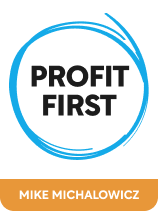

This article is an excerpt from the Shortform book guide to "Profit First" by Mike Michalowicz. Shortform has the world's best summaries and analyses of books you should be reading.
Like this article? Sign up for a free trial here .
Are you looking to cut down on your business expenses? How do you determine what your business needs and what can be cut?
When it comes to cost-cutting in business, it should never be done at the expense of your crucial functions. Before you cut costs, identify resources you couldn’t do without and cut only what you don’t need.
Here’s how to lower your business expenses.
Cutting Business Expenses
As you increase your profit percentage, you’ll need more money available for your profit allocation. However, increasing your income is not how you should get this additional money.
In business, cost-cutting is one of the simplest and fastest ways to inject more money for profit allocation. Michalowicz recommends four methods for cutting your expenses, all of which center around determining what your business needs and getting rid of what it doesn’t.
Method #1: Keep, Improve, or Remove
Michalowicz first suggests finding the costs you don’t need, and then cutting them. He recommends you cut 10 percent of your expenses immediately after starting the Profit First method, and even more than that as you continue on. Starting with a 10 percent cut is a good way to ensure that you’re consistently able to spend less of your income on expenses each quarter. This is because cutting an expense doesn’t immediately get you all of that money back, but instead means that less of the income you earn going forward will need to go into expenses and can instead be reallocated.
(Shortform note: Throughout this chapter, Michalowicz is working on the assumption that your business has expenses that are far too high. However, if that doesn’t describe your business, then you might not need to make the sweeping cuts that Michalowicz recommends here. That being said, these methods still might allow you to find some places where you can save money.)
When deciding where to cut costs, the key question you need to ask yourself is: Which expenses are necessary for keeping my business running and making my clients happy? Michalowicz creates five steps for applying this standard to your business’s expenses:
- Put together a list of all your business expenses from the last 12 months, using your income statements, current accounts payable report, credit card statement, loan statements, any other debt statements, and payments from your business bank accounts.
- Once you have the list, go through and label expenses necessary for running your business and making customers happy, “keep.” Label any expense that is necessary but can be accomplished in a cheaper way, “improve.” Finally, label expenses that aren’t necessary to running your business or making customers happy, “remove.”
- Once you’ve labeled all of your expenses in this way, it’s time to start cutting. Start by making a plan to cut every single expense you labeled “remove.”
- Then, go through each cost labeled “improve” and figure out how you can reduce it. This will be an extensive process that involves finding cheaper alternatives, negotiating with vendors, and looking for new ways to be frugal. All of these require you to do your research and be informed. Go into your expense negotiations with an idea of standard prices and potential cheaper alternatives, and you’ll be more likely to end up with a better deal.
- Finally, once you’ve done all of this, you can take another look at your “keep” expenses. Consider ways you could potentially reduce these—even if you can’t, you should still be critical of all expenses so you don’t get complacent in letting your costs build up.
| How Best to “Tidy Up” Your Expenses If you’re having trouble identifying unnecessary expenses, try using the practical techniques Marie Kondo recommends for determining the things you do or do not need. Kondo offers two guidelines in The Life Changing Magic of Tidying Up which can be particularly useful to identify cuttable costs. Discard in one go: When you’re going through the process of getting rid of what you don’t need, Kondo recommends that you get together everything you have and work through it all in one go. This doesn’t necessarily mean you have to do it all in one sitting, but you should work to declutter as much as you can until it’s done, rather than only doing a little at a time. When you declutter in one go like this, you keep up your momentum and don’t drag the process out over a long period of time. To use this with your business, use all the time you have available to assemble your list of expenses and keep, improve, or remove them until you’ve reached your current goal. Sort categorically: Kondo recommends that you sort what you’re decluttering by category, so you’ll have an easier time noticing what you have too much of. In your business, organizing your expenses by category will help you notice which are redundant and can be cut.For example, when you sort your costs into categories you might realize how many online subscriptions you’re paying for, and then can cut those costs. |
Method #2: Manage Labor Costs
Labor costs are a kind of expense, and Michalowicz’s second expense-cutting method involves managing them just like your other expenses—in other words, thinking about your employees within the “keep, improve, or remove” framework. (Shortform note: When considering which employees to “remove,” Michalowicz emphasizes that you act decisively, fire who you need to, and then ensure your other employees that their jobs are secure. This allows you to keep morale and satisfaction up amongst your employees, which research suggests directly contributes to customer satisfaction.)
In order to determine each employee’s categorization, Michalowicz recommends examining two points: how efficient your employees are and how many employees you need.
Ensure Your Employees Are Efficient
Often, cutting labor costs means getting better work done for your money rather than just firing employees—“improving” the expense instead of “removing” it. When managing your labor costs, Michalowciz suggests you first make sure that you and your employees are working effectively. He offers three different guidelines for this.
1) Consider Your Own Workload
Michalowicz recommends that as you manage your labor costs, consider the kind of work you’re doing—are you able to take on more work, instead of outsourcing it? Keep in mind that you should be doing the work of an employee when your business is small, and will slowly transition towards doing big picture organizational work as it grows. Don’t delegate all of your daily operational work to your employees early on—if you do, you’ll be paying someone else to do work that you could still be doing for your existing salary.
2) Systematize Your Labor
When managing the labor your employees do, Michalowicz advises that you make sure the way you want your business to run is clear to your employees. As an entrepreneur, you have a good idea of how best to do the daily work your business requires. Write it down, creating instructions or guidelines to help your employees do their work the way you want them to.
3) Determine Necessary Roles
Finally, go through the roles and responsibilities of each of your employees and determine which are not necessary for running your business or keeping customers happy. If an employee’s role doesn’t do either of those things, then Michalowicz says they need to be reassigned or fired.
Determine How Many Employees You Should Have
In addition to methods of ensuring your labor is efficient, Michalowicz recommends you save on labor costs by using your adjusted revenue as a guideline to determine the number of full-time employees you should have. By basing your employee count on your adjusted revenue, you’ll ensure you don’t spend too much money on payroll, while still having enough employees to complete all the work your business needs.
Michalowic advises that your business should generate 150k to 250k revenue for each full-time employee you have. This number also varies depending on how much you pay your employees and how much revenue a single employee generates—a business in an industry like tech which needs highly skilled laborers will generally have higher labor costs compared to its adjusted revenue, for example.
Method #3: Reframe Your Expenses
Michalowicz recommends that you reframe the way you think about your monthly expenses—as an individual piece of your business’s finances that will change over time, rather than as a static amount that must come before everything else. This will make it easier to recognize and accept which expenses need to be cut.
To reframe your expenses, he advises that when determining how much money you need to keep your business running, don’t just calculate your monthly expenses. Instead, calculate the income you’ll need each month to pay yourself a consistent salary, keep your profits up, and pay expenses. This way you still know how much money you need to keep your business running, but won’t put expenses as your first priority.
| Don’t Forget About Cash Flow Michalowicz’s suggestion to frame expenses in terms of income needed could potentially be less effective for ensuring you can pay your bills each month, depending on your cash flow. Remember that there’s often a lag between earning income and having that income as cash on hand. For example, you might be receiving cash on delivery, or be waiting for your client’s payment to go through. By framing your expenses as the amount of cash on hand you’ll need each month to pay the bills, you’ll be planning around this lag. However, if you’re using Michalowicz’s recommendation and only thinking about income needed each month, then you can end up in a situation where you’ve technically made enough income to pay your bills but don’t yet have that income available to you as cash on hand. |
When you do your accounting this way, you can also check on your business’s financial health just by checking your salary deposits into your personal account. This works with an existing habit, as just about everyone checks their personal bank account balance regularly. Here’s how to recognize how much income you need by checking your personal bank account:
- Take your monthly personal income needed to keep a consistent salary and divide it in half. This represents the habit of allocating your income twice a month.
- Divide that number by your salary allocation percentage. The result is the income your business needs to generate every two weeks to meet your personal financial needs.
- Multiply that number by 24. This is the income your business needs to generate each year.
- Compare your salary deposits to these numbers. If they are consistently lower than your required amount, then you know your business’s income is down. If its balance is higher than the required amount, then you know your business’s income is up.
| Fully Gauging Financial Health While Michalowicz suggests that this process will allow you to gauge your business’s financial health, many financial experts would argue that it can’t fully do so. Determining your income via your personal bank account will help you understand how much money is coming into your business, but it won’t help recognize where that money is—or needs to be—going. To get a full picture of your business’s financial health, experts recommend consulting your financial documents, with the help of a bookkeeper or accountant if necessary. These documents will help you understand things that a bank balance can’t, like how quickly you turn over your inventory or how much money you need to pay interest on your business’s debts. |
Method #4: Pay Off Debt
The last method of expense cutting Michalowicz outlines is using the Profit First method to eliminate interest from business debts. (Shortform note: Most of Michalowicz’s cost-cutting methods already assume that your business is in debt, and that’s a fair assumption to make—one recent study shows that 79 percent of all US small and medium companies are in debt, and that 58 percent of all US small and medium companies are over $50,000 in debt.)
Be Ruthless in Cutting Expenses
Your first priority when paying off debt is to find a way to make your expenses less than your current adjusted revenue. You can’t compromise on this, because if you do you’ll just continue to increase your debt. Reduce expenses using the “keep, improve, remove” method we explored at the beginning of this chapter, and be particularly vigilant in checking and rechecking them for ways you can save money. Continue to cut expenses until your expense allocation percentage is 10 percent below the typical percentage for a company of your business’s size. This extra amount cut is a safety net, just in case you need to take back a few expenses to keep things running.
Spend Critically
While in debt, cancel any and all automatic payments. You need to know exactly how much you are spending when and to be critical of every single expense you make—every expense paid will be a conscious decision. Cancel all automatic credit card charges (you can do this by getting a new credit card with a new number from your bank), stop all automatic withdrawals from your accounts, and pay with checks instead.
(Shortform note: While Michalowicz advises you to think about each expense you make, you might be wondering how to do so effectively. Dan Ariely recommends in Predictably Irrational that you pause before buying something and ask yourself several questions. He advises you to ask yourself how your preference for this purchase started, if the purchase is worth the time and money you spend on it, and if there’s a better way you can spend your money. Answering these questions allows you to rationally think about your behavior and recognize if your purchase is due to a habit or due to what you genuinely need.)
Paying Down Your Debts
Once you’ve applied the first two methods to make sure you aren’t taking on any more debt, then you can start paying off your existing debts. Michalowicz outlines two guidelines you should follow while doing so.
Alter Profit Distribution
When you take out half of the money in your profit savings account each quarter for your personal use, 99 percent of that money should go towards paying your debts. Keep one percent for yourself so you can still feel rewarded for your success. Doing this keeps you from spending your tax money or salary on debts and further incentivizes you to keep your business stable and profitable.
Build Your Confidence
Pay your debts in order from smallest to largest, rather than by interest rate. Pay minimums for all other debts, and use what’s left to pay down the smallest one. This builds confidence in your ability to pay debts and makes paying them all off seem achievable.
Like much of the Profit First method, this emphasizes how the average person thinks over what’s the most logical. Paying your highest interest debts first makes more sense logically, but starting with your most daunting debts is far more likely to lead to you giving up. Instead, prove to yourself that paying back debt is possible and you’ll do so more consistently.

———End of Preview———
Like what you just read? Read the rest of the world's best book summary and analysis of Mike Michalowicz's "Profit First" at Shortform .
Here's what you'll find in our full Profit First summary :
- Why traditional business accounting methods don't work
- How to use the Profit First method to increase your business’s profitability and stability
- How to assess your business's current financial health






